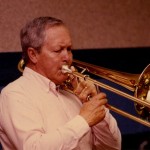Seraph is new. Five young women, extraordinarily well-versed as musicians and artists with solid philosophical underpinnings and chemistry. Their perspectives and hopes are inspiring and their individual accomplishments make the sum total of Seraph beam with promise. davidbrubeck.com and “Five!” is honored to share the nascent flight of Seraph.
Who had the idea for the group?
Katy: Mary came up with the idea for a female brass group about 7 years ago. Between taking auditions, finishing school, winning jobs, and starting families it took a few years to find the right group of players at the right time. Once we did, the vision came together quickly.
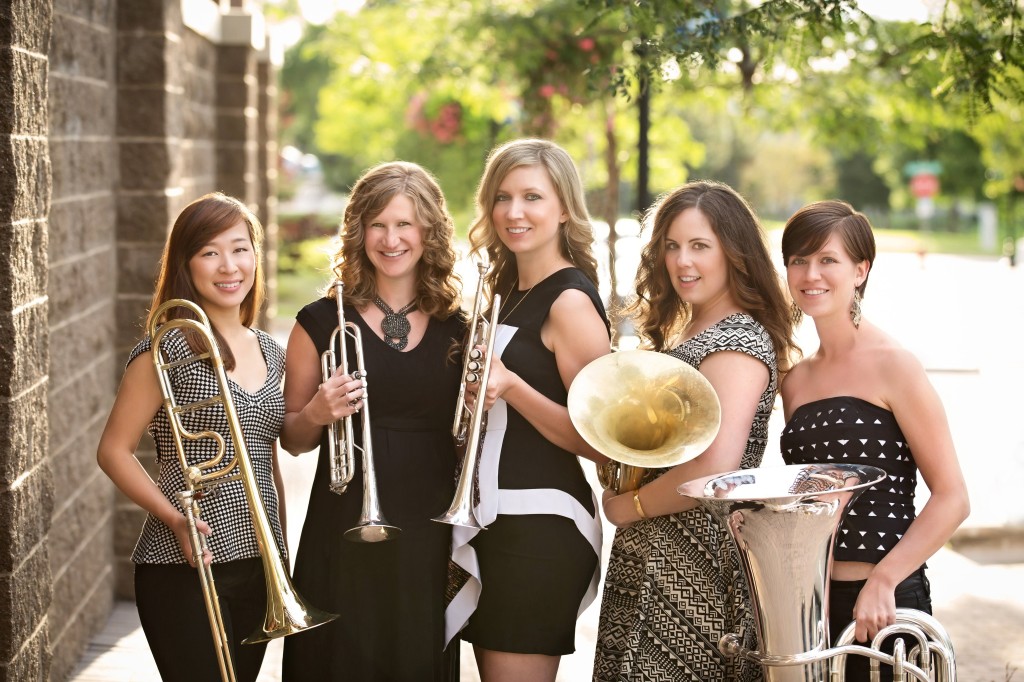
How did it come together?
Mary: I wanted a chamber music group where all five members were equal owners of the group and everyone shared the same vision: to make fantastic chamber music and perform at the highest level. Everyone in Seraph contributes equally. I know all of the performers from different parts of my life and called each of them to see if they wanted to start a serious brass group. Katy and I went to Yale at the same time and Zenas and I started performing two seasons ago with the Rodney Marsalis Philadelphia Big Brass.
I met Beth and Ashley more recently-Beth lives not too far from me in Florida and Ashley and I shared a recital at the most recent International Trumpet Guild conference. We performed a duo piece and afterwards Jens Lindemann told us that we sound great together and that we should form a group. All five of us feel a great connection and we love playing music together.
Where is everyone living now? And how did you conquer time and space for rehearsals and recordings?
Katy: Ashley lives in the Midwest, Zenas and I live in the mid-Atlantic, and Beth and Mary live in south Florida. Conquering time and space issues for our debut recording was a labor of love (pun intended). We were limited geographically because Ashley was pregnant. There was no option other than for us to travel to her before the baby was due. Ashley has an extensive personal network and utilized her connections and resources to line up the recording and concert logistics in her town.
Please introduce the band, and talk about their backgrounds. teachers and brass playing philosophies.
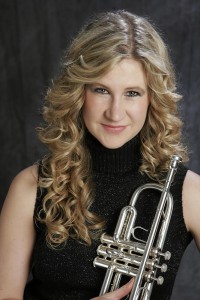 Ashley: I am originally from Southern Virginia. I started playing the trumpet in the 5th grade and my mom was my first trumpet teacher. I won the Junior High Division of the National Trumpet Competition in the 7th grade, playing a Herbert L. Clarke cornet solo and fell in love with performing for people. I studied with Allen Bachelder in high school and went to the Cincinnati College-Conservatory of Music where I studied with Alan Siebert, Marie Speziale and Philip Collins. I won a job with the Dayton Philharmonic Orchestra just out of undergrad, and continued to pursue solo performing on the side. I experienced some significant chop issues from 2003-2005 and eventually took a leave from the orchestra, moved to Boston, MA where I studied with Steve Emery for two years. During that time I learned not only how to use my air more efficiently, but how not to impinge the vibration of the top lip. After my time in Boston, I continued to pursue this new way of playing the trumpet with ease and freedom. I won the principal trumpet job with the Cincinnati Chamber Orchestra, and resumed my position with the Dayton Philharmonic. In 2008, I married an incredible life partner, Nathan Tighe, and today we celebrate 6 years of marriage and have two beautiful children, Morgan and Kevin. We currently live in Rochester, MN.
Ashley: I am originally from Southern Virginia. I started playing the trumpet in the 5th grade and my mom was my first trumpet teacher. I won the Junior High Division of the National Trumpet Competition in the 7th grade, playing a Herbert L. Clarke cornet solo and fell in love with performing for people. I studied with Allen Bachelder in high school and went to the Cincinnati College-Conservatory of Music where I studied with Alan Siebert, Marie Speziale and Philip Collins. I won a job with the Dayton Philharmonic Orchestra just out of undergrad, and continued to pursue solo performing on the side. I experienced some significant chop issues from 2003-2005 and eventually took a leave from the orchestra, moved to Boston, MA where I studied with Steve Emery for two years. During that time I learned not only how to use my air more efficiently, but how not to impinge the vibration of the top lip. After my time in Boston, I continued to pursue this new way of playing the trumpet with ease and freedom. I won the principal trumpet job with the Cincinnati Chamber Orchestra, and resumed my position with the Dayton Philharmonic. In 2008, I married an incredible life partner, Nathan Tighe, and today we celebrate 6 years of marriage and have two beautiful children, Morgan and Kevin. We currently live in Rochester, MN.
Zenas: I grew up kind of everywhere, various parts of New Jersey, San 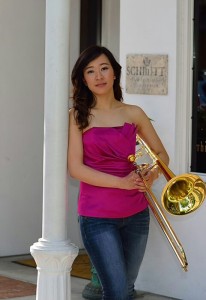 Francisco, Seoul, and the DC suburbs. I had played piano since I was five-years-old, but when the opportunity came to choose an instrument in the 5th grade, the trombone was an easy choice for me. I did not want to play something all the other girls played, and it seemed the most weirdly shaped instrument to me. I studied with Jim Kraft of the National Symphony in high school, and went on to study with Norman Bolter at New England Conservatory. Norman Bolter focused my attention on the idea of using out-of-the-box concepts to solve technical problems. It is amazing what the mind can do-if you use it! Then I crossed the pond to the Netherlands to study with Jorgen van Rijen, Pierre Volders, and Remko de Jager in pursuit of my Masters degree. During my second year in the Netherlands, I won the principal trombone job with the Daegu Symphony Orchestra. After a year, I came back to the DC area, and started my DMA at University of Maryland with Craig Mulcahy.
Francisco, Seoul, and the DC suburbs. I had played piano since I was five-years-old, but when the opportunity came to choose an instrument in the 5th grade, the trombone was an easy choice for me. I did not want to play something all the other girls played, and it seemed the most weirdly shaped instrument to me. I studied with Jim Kraft of the National Symphony in high school, and went on to study with Norman Bolter at New England Conservatory. Norman Bolter focused my attention on the idea of using out-of-the-box concepts to solve technical problems. It is amazing what the mind can do-if you use it! Then I crossed the pond to the Netherlands to study with Jorgen van Rijen, Pierre Volders, and Remko de Jager in pursuit of my Masters degree. During my second year in the Netherlands, I won the principal trombone job with the Daegu Symphony Orchestra. After a year, I came back to the DC area, and started my DMA at University of Maryland with Craig Mulcahy.
Currently, I’m working on the DMA, playing with Rodney Marsalis Philadelphia Big Brass, freelancing and teaching in the DC area, and this past summer I have married my best friend of 8 years, tubist John Banther! My main philosophy in brass playing is using phrasing to aid technique. I feel that often, naturally musical phrasing is not second nature to young brass players. I have found that when you give direction a string of notes, often times the air is used more efficiently (and much better supported), and in turn articulation and sound is improved. This allows a sense of ease in playing to set in. Not to mention that it’s just nice to make music, instead of playing just notes!
Beth: I grew up in Davenport, Iowa, and came to the tuba when I was around ten-years-old. I had been playing the violin for several years, and was honestly heartbroken when my dreams of being a flute player were crushed, and I was given a euphonium instead. Very shortly after, I switched to the tuba and haven’t looked back since.
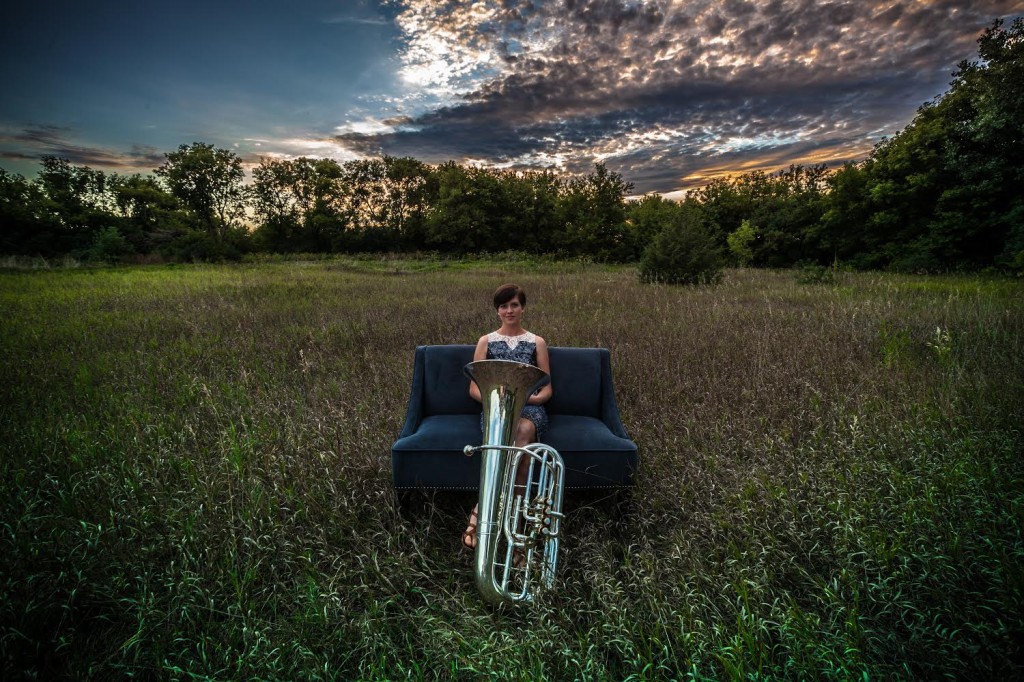
I’ve been very fortunate to have three very influential teachers in my life — Marty Erickson at Lawrence University, Mike Roylance at Yale University (MM) and Rex Martin at Northwestern University (DMA-in progress). All three were great examples for me of strong work ethic, well thought-out teaching philosophies, and a demonstrated track record of success, and I’m fortunate to count them as friends and mentors to this day.
As for my own brass playing philosophy, the goal is generally to keep it as simple and musical as possible. Having spent almost 10 years in higher education, the transition to becoming your own musician can be a little daunting, but I have to say, it’s been the most exciting time as well. I try to vary my practicing as much as possible, incorporating sight-reading, études, or other things into my daily routines that will keep me engaged and focused on continually improving both as an artist and an artisan.
 Mary: I am from the Chicago area, and I started on a Yamaha cornet when I was ten-years-old. I later studied with David Bilger at The Curtis Institute of Music and with Allan Dean at the Yale School of Music. Out of school, I won a position with the Richmond Symphony in Virginia and also taught at Virginia Commonwealth University. I am also an active soloist and chamber musician (you can read my full bio at www.marybowden.com)
Mary: I am from the Chicago area, and I started on a Yamaha cornet when I was ten-years-old. I later studied with David Bilger at The Curtis Institute of Music and with Allan Dean at the Yale School of Music. Out of school, I won a position with the Richmond Symphony in Virginia and also taught at Virginia Commonwealth University. I am also an active soloist and chamber musician (you can read my full bio at www.marybowden.com)
I am constantly looking for inspiring projects: this season I am performing my first Brandenburg 2 with my non-profit ensemble in Florida-the Chrysalis Chamber Players, and I’ve just finished recording my first solo album of all American works that will be released in 2015.
Making a beautiful rich sound on the trumpet has always been my main focus. When I warm up in the morning, I play soft lip bends to get the cobwebs off of my sound and find my center for the day. Hakan Hardenberger describes this as getting the “gravel” out of your tone for the day. I spend most of my time these days practicing basics (80% of the time). This is helpful with my crazy travel schedule and when I have a ton of music to learn and perform. If the basics are in place, then learning music is much faster. I spend a lot of time doing mental practice and visualizing what I want the music to sound like. Also SLOW practice has been a game changer for me when I have stacks of music to learn. I’ve learned a lot from Jens Lindemann who I’ve studied with at the Banff Centre. I switched to smaller equipment since I am doing more solo and chamber music work. I currently am based out of Naples, FL where I live with my husband, trumpeter Dave Dash, and our cat Duke.
Katy: I grew up in a musical family in Metro-Detroit, studying Suzuki violin from age 2-5 and beginning horn lessons at age 10. I was very fortunate to have an exceptional private teacher, Connie Hutchinson. My parents are both music teachers and they knew the value of a solid foundation at an early age. I studied with Soren Hermansson at University of Michigan, who taught me the strength of a musical phrase and to sing through the horn. Randy Gardner at CCM was my teacher for my Masters degree. In addition to the advantage of his orchestral experience, he has a great mind for teaching. He is meticulous yet his ideas are simple and focused on honing fundamental skills and learning repertoire. I then studied William Purvis at Yale and he was excellent mentor to me. He made me question the purpose behind every note I played. He asked a lot of questions and made me figure out how to approach horn from several angles. I have also studied extensively with Denise Tryon in Philadelphia, who is all about quality of sound, air quantity and air speed. These four people were incredibly influential in my approach to the horn and I consider myself very fortunate to be able draw upon the pedagogy of each while forming my own.
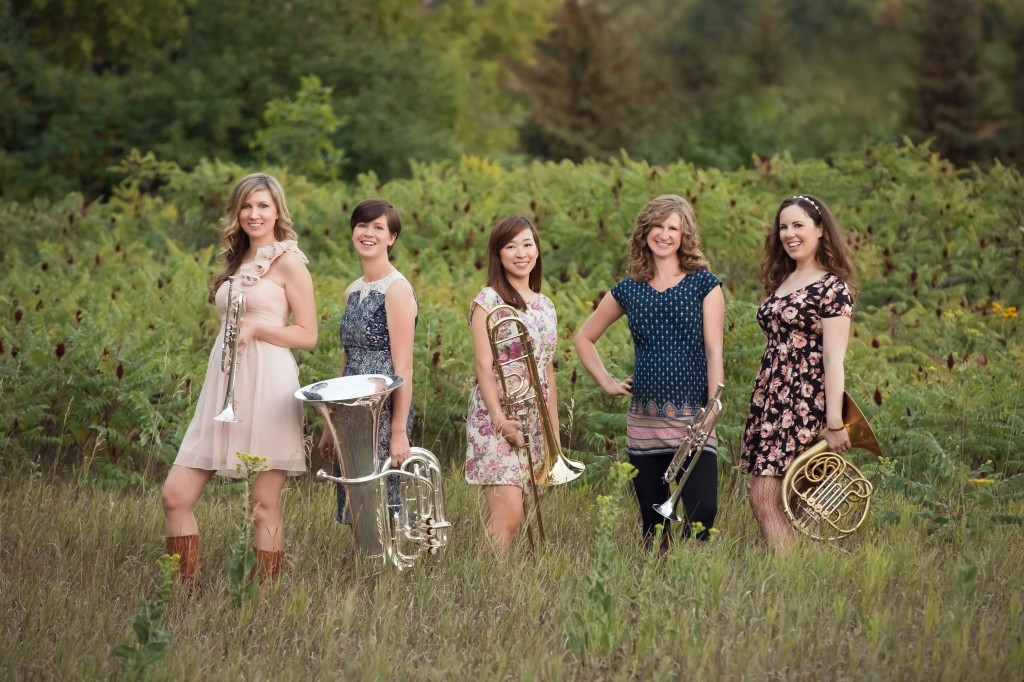
Where do you see the Seraph in 5 years?
Zenas: In 5 years, we see Seraph as an active chamber ensemble, not only in terms of concertizing, but also having established strong partnerships with educational and community organizations to foster the idea of empowerment to the next generation of young women. We are currently discussing our first recording project, so hopefully we will have one or two recordings in 5 years. We aim to record new commissions, and our own arrangements of audience favorites, as well as brass favorites! We hope to have completed a few tours, be it in the US or overseas.
Do you have any in-house arrangers?
Ashley: I am married to one of our primary arrangers! My husband, Nathan Tighe, is currently a fourth year medical student who loves to arrange music for brass quintet. Prior to his medical training, he completed over 20 brass quintet arrangements, many of which we include in our concerts! He still arranges new music for us and sees it as a fun balance to his medical career.
Which brass groups have inspired you?
Ashley: Mnozil Brass
Katy: Empire, Canadian, German Brass
Beth: Stockholm Chamber Brass, American Brass Quintet, Phillip Jones Brass Ensemble
Mary: Boston Brass and Center City Brass
Zenas: New Trombone Collective
Non-brass chamber music groups?
Ashley: Kronos Quartet, Time for Three, The Kings Singers, Chanticleer, Yo-Yo Ma and his numerous collaborations, Bobby McFerrin and his numerous collaborations
Katy: Prism Quartet, eighth blackbird, Roomful of Teeth
Mary: Seraphic Fire, Dover Quartet, Ensemble Intercontemporain
What is the biggest challenge for a tubist in a brass quintet (Beth), and what size tuba have you decided to use? Any thoughts of more than one tuba?
Beth: The biggest challenge: portability. Jokes aside, for the stuff that we recorded, I used an F tuba, but I do really enjoy the sound of the bigger CC tuba in the quintet — repertoire permitting. I think one of the challenges we face as tuba players in a quintet is that our role in the group changes frequently, as so many composers and arrangers have differing ideas on the role, capabilities, and sound of the tuba — some envision a bass trombone sound, while others hear more of a large tuba sound, and everything in between. Navigating those differences can have a huge effect on how we perceive our role in the low end, and I think that’s one of the more exciting challenges of playing in a quintet.
(Or horn, or trombone for that matter? Does the portability of the trumpet give them an advantage of options for colors and ease?)
 Katy: We could talk physics for awhile here, but suffice it to say that the length and shape of the tubing for horn and trombone give both instruments a wide array of colors in the right hands. Trumpets have the hassle of needing to bring an extra suitcase just for their horns! Sure, it’s portable if you only need one, but when is the last time you saw a trumpet player show up to a gig with only one horn?
Katy: We could talk physics for awhile here, but suffice it to say that the length and shape of the tubing for horn and trombone give both instruments a wide array of colors in the right hands. Trumpets have the hassle of needing to bring an extra suitcase just for their horns! Sure, it’s portable if you only need one, but when is the last time you saw a trumpet player show up to a gig with only one horn?
Mary: I travel quite a bit and end up carrying a b-flat, c, e-flat, 2 piccolos (Yamaha and a scherzer), and flugelhorn plus a handful of mutes and mouthpieces…
Which types of trumpets will Seraph feature? Any plans for flugelhorn?
Ashley: Mary and I play all types of trumpets including the cornet, Bb, C, Eb, piccolo and flugel horn. When given a choice, Mary is the one who prefers to play the piccolo trumpet and Eb and I prefer to play the cornet or flugelhorn.
Any plans for cross-overs with vocalists? or, Other female instrumentalists?
Zenas: In the immediate future, Joseph Hallman, who wrote a piece for Mary Bowden on her upcoming solo CD, is currently working on a piece for quintet and soprano. We are hoping to premiere it in March, 2015.
More women than men are now graduating from Universities in the United States. Is the 21st Century shaping up to be the Century of the Woman?
Katy: One hundred years is a long time, hopefully the 21st century will be less about defining the differences between gender roles and more about acknowledging the differences in individuals based on their behavior and social conduct.
If you were to add a sixth instrument, what would it be?
Mary: I don’t think we would add a permanent member to the group but we would love to collaborate with other musicians. I could see us performing with percussion at some point and also organ. I am interested in collaborations with any instrument if it works!
Please list your favorite recording for brass!!
Ashley: Bay Brass, “Christmas CD”
Katy: German Brass, “Bach 2000”
Beth: anything by the Phillip Jones Brass Ensemble
Mary: Center City Brass, “Street Song”
Zenas: Empire Brass, “Class Brass”
c. 2014 David William Brubeck All Rights Reserved. davidbrubeck.com
Interested in more “FIVE” tm interviews?
Canadian Brass 2014, Windsync 2014, Boston Brass 2015, Mnozil Brass 2015, Spanish Brass 2014, Dallas Brass 2014, Seraph 2014, Atlantic Brass Quintet 2015, Mirari Brass 2015, Axiom Brass 2015, Scott Hartmann of the Empire Brass 2015, Jeffrey Curnow of the Empire Brass 2015, Ron Barron and Ken Amis of the Empire Brass, Meridian Arts Ensemble 2015, Berlin Philharmonic Woodwind Quintet 2015, American Brass Quintet 2015
Images Courtesy of SERAPH
Seraph Brass Quintet interview, brass quintet interview

